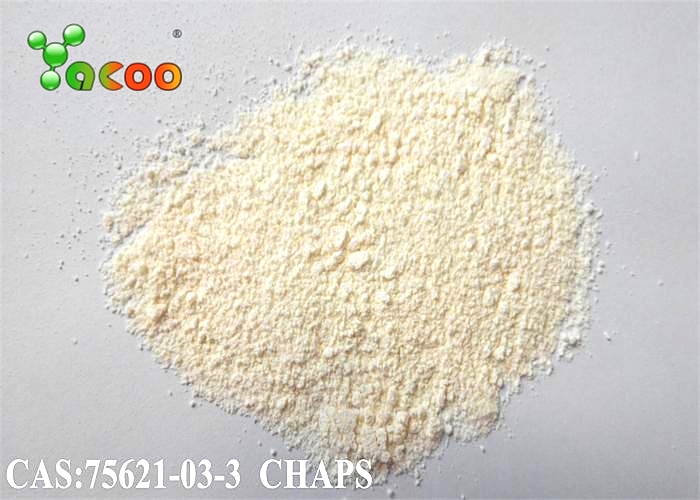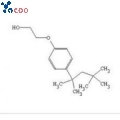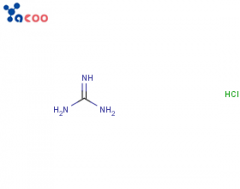Catalog No. :
D0001CAS No :
75621-03-3Empirical Formula :
C32H58N2O7SMolecular Weight :
614.877Assay :
≥98.0%Appearance :
White to pale white powderBrand:
YACOOSuzhou Yacoo Science Corporation was founded in 2003, specialized in Biological buffers, Diagnostic reagents, Medical intermediates and Electronic chemicals. We have our factory in Shandong Province to offer high-quality and low-price CHAPS for Yacoo customers.
Specification:
English Name:3-((3-Cholamidopropyl)dimethylammonium)-1-propanesulfonate
Molecular Formula:C32H58N2O7S
Molecular Wt:614.88
CAS:75621-03-3
Shelf life: two years
|
SPECIFICATION PROPERTIES |
STANDARD |
|
Appearance |
White to pale white powder |
|
Assay,% |
≥98.0 |
|
Solubility(10% aq.) |
Colorless to slightly yellow, clear |
|
Loss on drying,% |
≤4.0 |
|
TLC |
One spot |
Usage:
CHAPS can be used to solubilize membrane proteins as well as to break down protein-protein interactions. CHAPS has a low micellar molecular weight (6,150) and a high critical micelle concentration (6-10 mM) and can therefore be removed from the sample by dialysis. It is also suitable for dissolving proteins in isoelectric focusing and two-dimensional electrophoresis. CHAPS is commonly used for non-denaturing (urea-free) isoelectric focusing and has been found to yield excellent resolution for certain subcellular preparations and vegetable proteins. The concentration between 2-4% (w / v) is usually used for isoelectric focusing gels.
Storage:2-8℃
Packing: 1KG/Bag, or as your request

 High Purity Triton X-100 CAS:9002-93-1 OCTYLPHENYLPOLYETHYLENE GLYCOL
High Purity Triton X-100 CAS:9002-93-1 OCTYLPHENYLPOLYETHYLENE GLYCOL
 Guanidine hydrochloride CAS 50-01-1
Guanidine hydrochloride CAS 50-01-1
Copyright © Suzhou Yacoo Science Co., Ltd. All Rights Reserved
Friendly Links :
online service